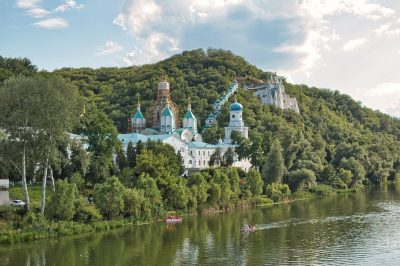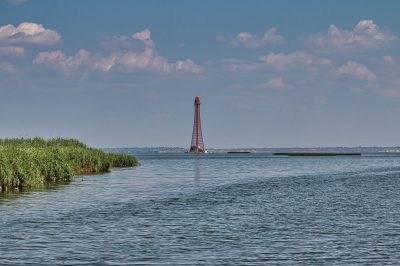It is the most remote corner of Ukraine from Europe. There are few flights to the region and far fewer foreign visitors come to southeastern Ukraine than to Kyiv, Lviv or Odessa. Nevertheless, this region also has some outstanding sights that are really worth visiting. Therefore, we would like to introduce you to some of the most beautiful places, as well as other special features. Let’s go to the most beautiful sights of southeast Ukraine.
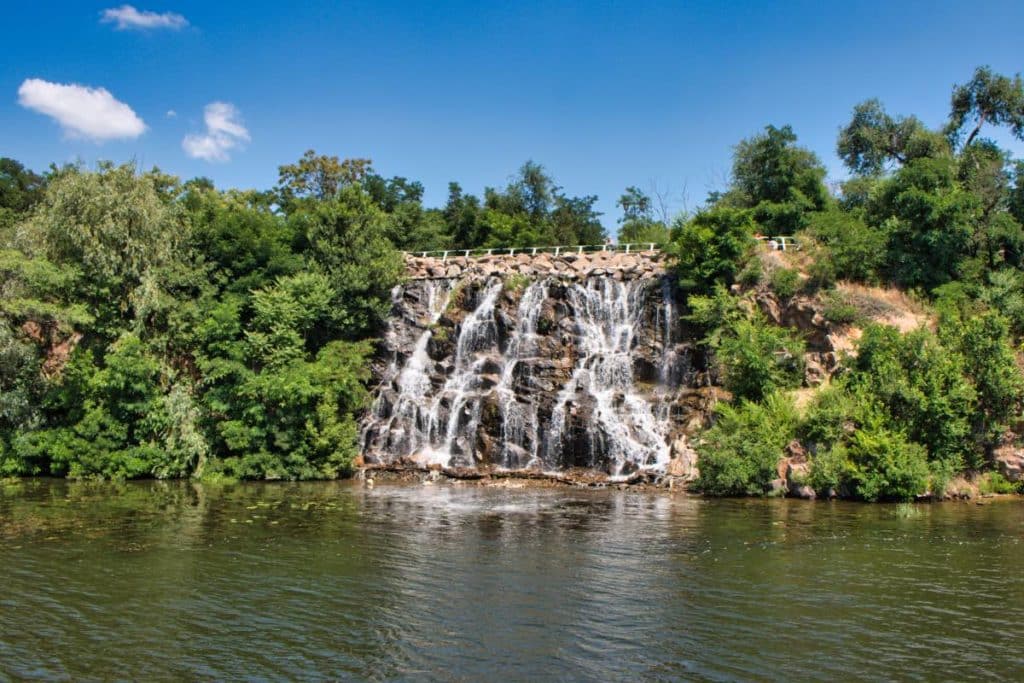
Dnipro
Dnipro is the largest city in southeastern Ukraine and also the capital of Dnipropetrovsk oblast. The oblast is named as the city was until decommunization and has not yet been renamed. Dnipro is not only an important economic center and the seat of various large Ukrainian companies, such as the Privatbank, but also has a lot to offer in terms of tourism. Thus, the bank of the Dnipro is very beautiful for long walks. Here you can also observe the artificial waterfall, which was created on the Monastery Island in the Dnipro. In the city, in addition to a huge war panorama, there is also a museum of the War in Ukraine. The Transfiguration Cathedral on October Square is one of the most beautiful churches in Ukraine. The restaurants in the city center and on the Dnipro also offer unique dishes with great views.
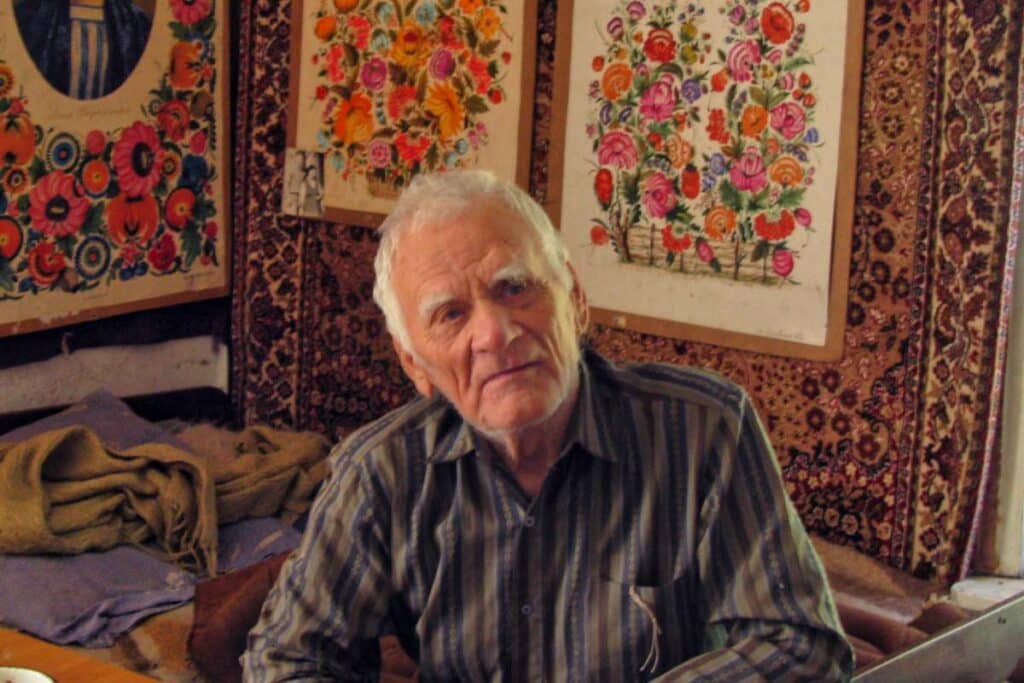
Petrykivka paintings
The paintings of Petrykivka are among the most famous in Ukraine. They are especially known for their floral motifs. Petrykivka paintings are applied to all sorts of objects. But also on caskets or cups they result in real works of art. You can watch the masters of this painting at work in the village of Petrykivka. They will be happy to show you their work.

Trinity Church Novomoskovsk
It is the highest and largest wooden church in Ukraine, the Trinity Cathedral of Novomoskovsk. The 60-meter high building was built by Cossacks completely without the use of nails in the 18th century. This tradition of building wooden churches dates back to Jesus being nailed to the cross with nails. The church has nine towers, the tallest of which is about 65 meters high. It is enthroned in the center and there are four towers at each corner and four more in between, all built symmetrically. The church is a real feature and is part of any visit to Dnipro, as it is quite easy to get to from here.
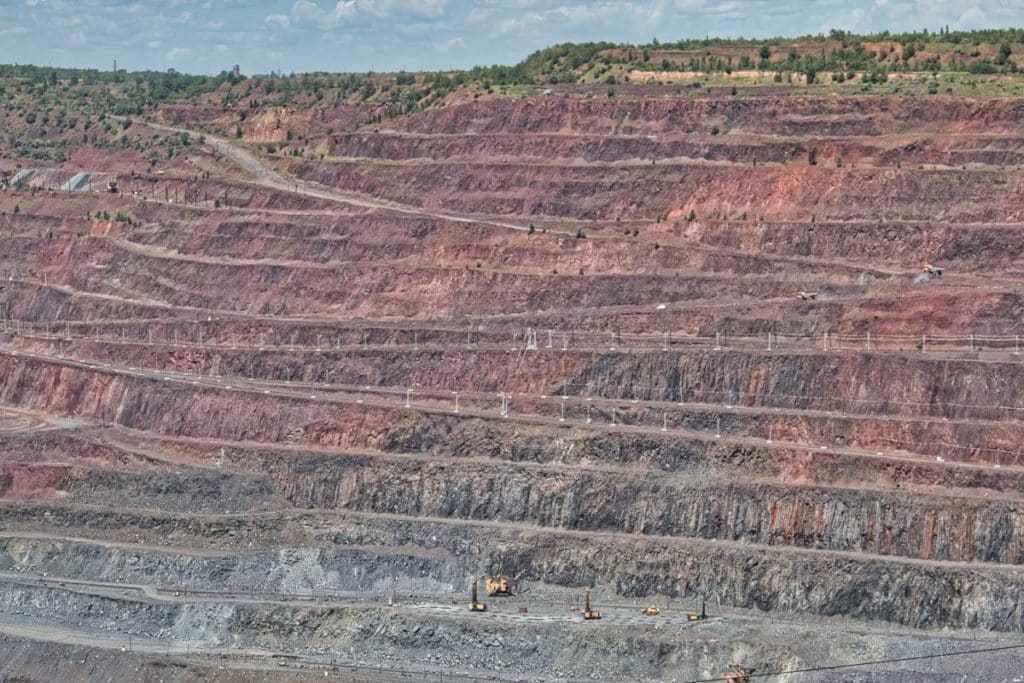
Kryvyj Rih
The industrial city of Kryvyi Rih is the longest city in Ukraine and stretches more than 50 kilometers from northeast to southwest. Kryvyi Rih is mainly known for the local mining industry. There are dozens of underground mines and huge iron ore mines. Some of the industrial works can be visited on a guided tour. But Kryvyj Rih is not only an industrial town. In the valley of the Inhulez River, where the town was founded, beautiful boat trips can be made. From the nearby cliffs there is a magnificent view. Kryvyj Rih also has artificial rapids at a dam, which make a visit seem even more like an adventure.
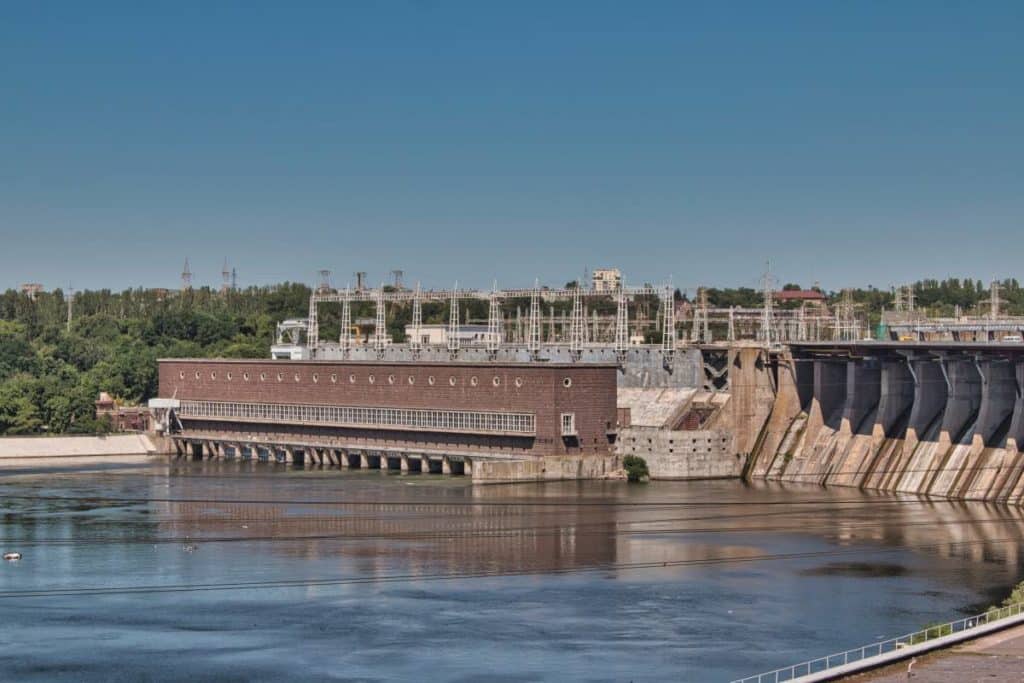
Zaporizhia
Zaporizhia is the mother of all cities in the Ukrainian steppe. For on the island of Khortitsa in the Dnipro River lies the most famous of all Cossack fortresses. Once the island was a stop on the way along the Dnipro, because near Zaporizhia there were dangerous rapids. However, with the construction of Dniprohe’s dam, which is worth seeing, the river was tamed and served to supply electricity to the local industrial plants in the rapidly growing city. Also noteworthy is the kilometer-long street Prospekt Soborniy, which makes up the main artery of Zaporizhia. The city’s Automobile Museum has cars from all over the world, but of course pays special homage to the Soviet Zaporozhez, which was built here for a long time.
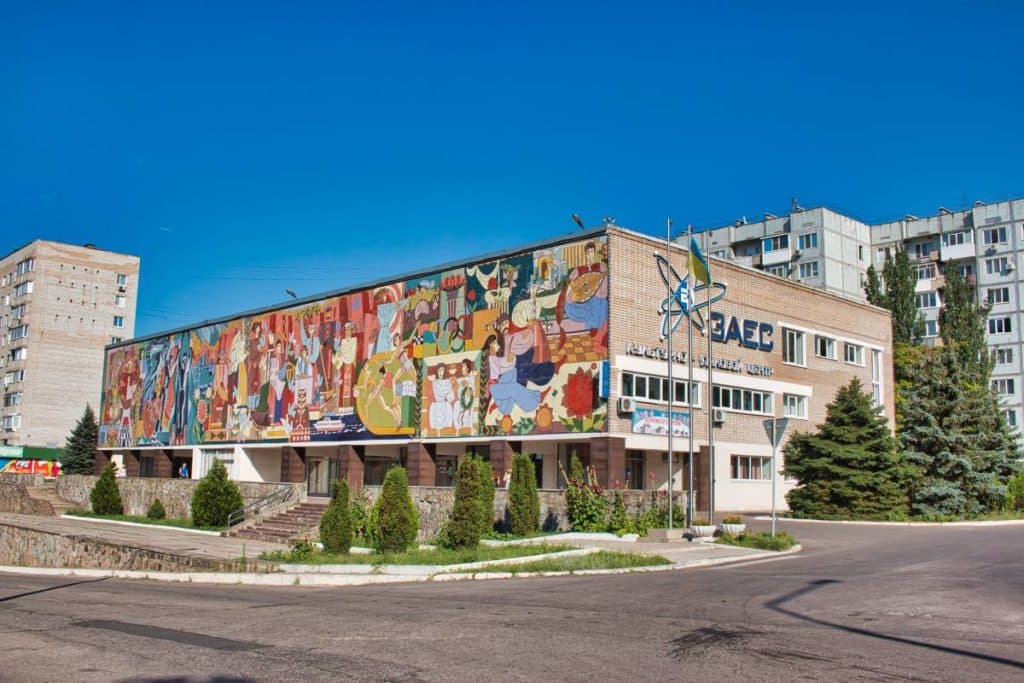
Enerhodar
Most people would probably leave Enerhodar to the left. But the city, which translates as “gift of energy,” is the site of Ukraine’s largest nuclear power plant and a planned city. In other words, it was built from scratch for the power plant’s employees and their families on the banks of the Dnipro River. Here you can see how such a planned city is laid out. Especially remarkable are the culture house and the mosaics on the buildings. It is difficult to get to the power plant itself, but you can look at the reactor buildings from a distance.

Priazovsky National Park
Priazovsky National Park was created to protect the unique coastal landscape on the Ukrainian coast of the Sea of Azov. The national park has an area of almost 800 square kilometers and is the third largest national park in Ukraine. The park includes, among others, the Molotshna River and its estuary lagoon. The local steppe in combination with the wetlands creates a very unique biodiversity with a mixture of many rare birds and other animals of the wetlands, as well as the flora and fauna of the steppe landscape. Since the national park was only established in 2010, it will take a while for the protection of this area to take hold.

Berdyansk
Berdiansk is an important industrial center with several large combines and a port that long had great importance for the region. However, Russia’s annexation of the Crimean peninsula in violation of international law and the construction of the Kerch Bridge made the port inaccessible to larger ships. And for smaller ships, too, Russian controls on entry into the Sea of Azov mean harassment, which has led to a sharp decline in shipping.
It comes in handy that Berdiansk is also a health resort. Thus, there are several salt lakes here and the healing muds from the place are supposed to help with various diseases. The pleasant climate, long sandy beaches and many entertainment options attract more and more tourists to Berdiansk every year. So far, however, most of them are domestic tourists, who now no longer go to the Crimea on vacation.
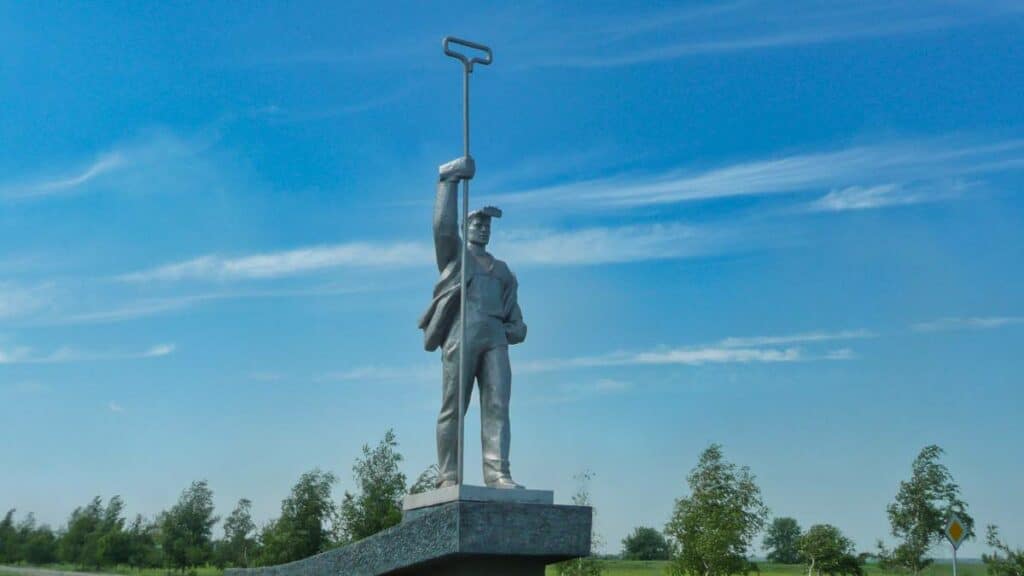
Mariupol
Even around 1900, 70% of the inhabitants of Mariupol were Greek. The city of Marias, as it was called in Greek, was a center for Greek emigrants. Today, the city is primarily an industrial town. About one-fifth of the inhabitants work in the huge industrial plants that characterize the city and also cause heavy air pollution. But since the War in Ukraine war and the recapture of the city by the Ukrainian army, much has been put into the city’s development. New coworking spaces have opened, infrastructure projects have been driven. Mariupol is increasingly transforming into a modern city where residents enjoy living. The port and the Sea of Azov also contribute to the city’s attractiveness.
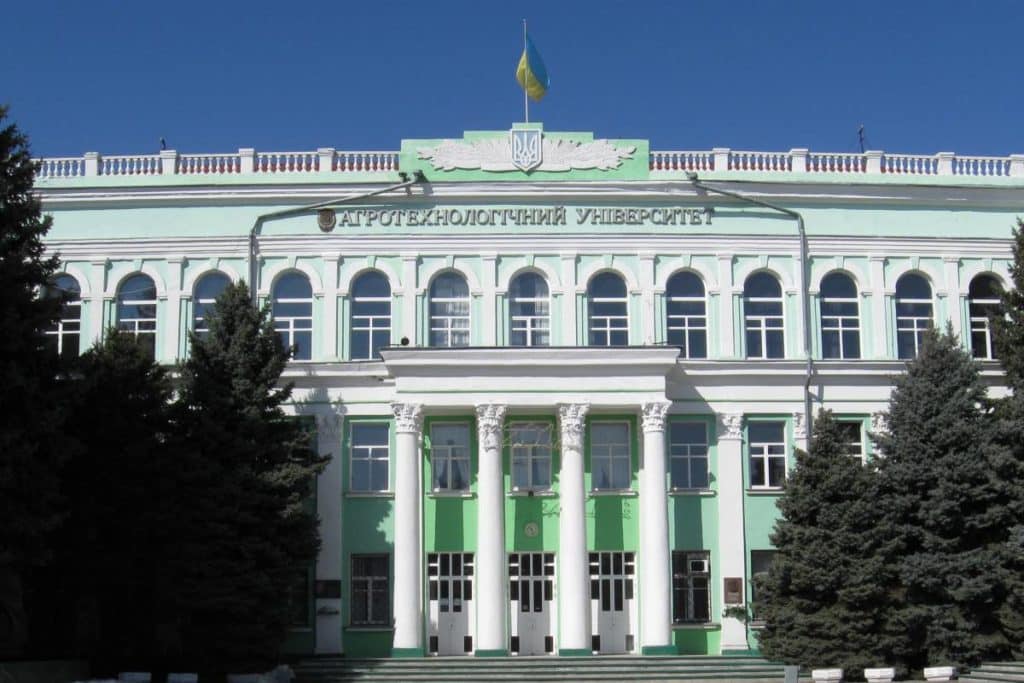
Melitopol
Melitopol is not exactly the most beautiful city in the region, which is also due to the fact that there are hardly any buildings worth seeing. Nevertheless, the city has a pleasant Mediterranean flair. Due to minorities living here, it also seems cosmopolitan. Melitopol was founded by Greeks and means honey city. And that’s exactly what the city is using now and you can even buy a specially produced honey from here. Also nice is the city garden, where the city’s agricultural university grows different kinds of stone fruits, so you can sneak a few cherries, apricots and other fruits that grow quite well here in the region due to the sunny climate.
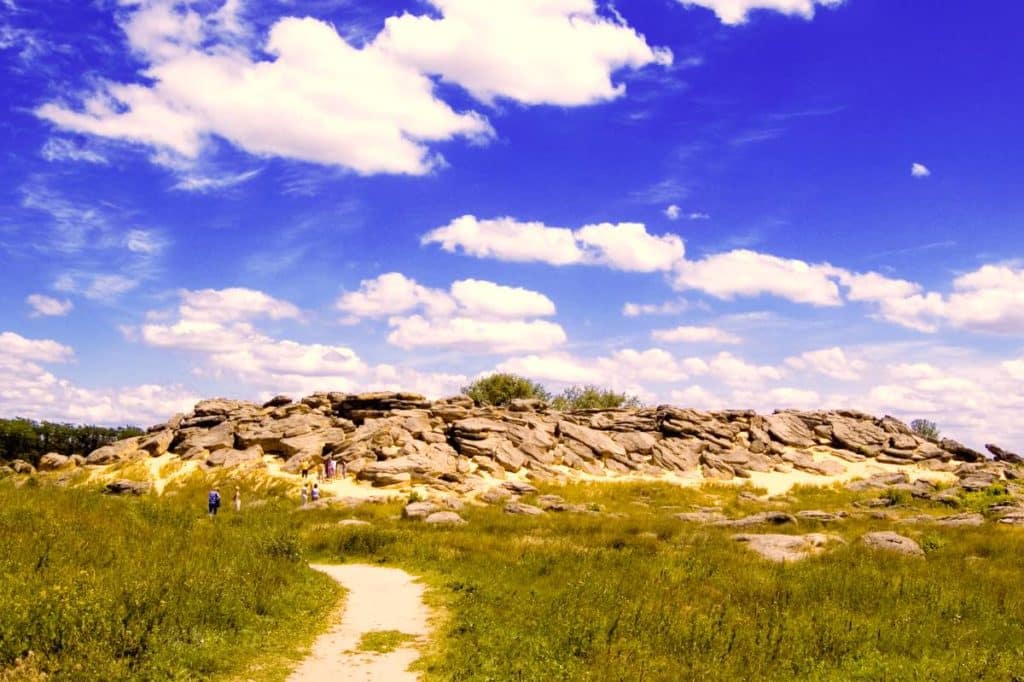
Kamiana Mohyla
In the middle of the steppe of the Azov foreland rise the rocks of Kamiana Mohila. Originally this was a sandbank of the ocean, which over the millions of years has turned to stone. The rocks are up to 12 meters high. From a bird’s eye view, the rock formation looks like a human brain. In pre-Christian times, the rocks were used for rituals and were considered sacred by the local pagans. Also, at that time, the inhabitants of the area were already carving images of animals in the caves. Unfortunately, the petroglyphs are hardly recognizable. However, occasionally one thinks to recognize a bull.
Ethnic Groups in Southeast Ukraine
Another interesting feature of southeastern Ukraine are the different ethnic groups living in the region. Thus, there is still a visible group of Greeks and Bulgarians in the cities. In the past, the region was also inhabited by Germans, who founded settlements here, such as the small Heidelberg (now Pryschyb). You can also find here the ethnic group of Molokans. These ethnic Russians migrated to these areas in the 18th century because they were seen as schismatics by the Russian Orthodox Church. They have no priests and also consume dairy products during Lent. Hence their name, from the Russian word for milk – moloko.


